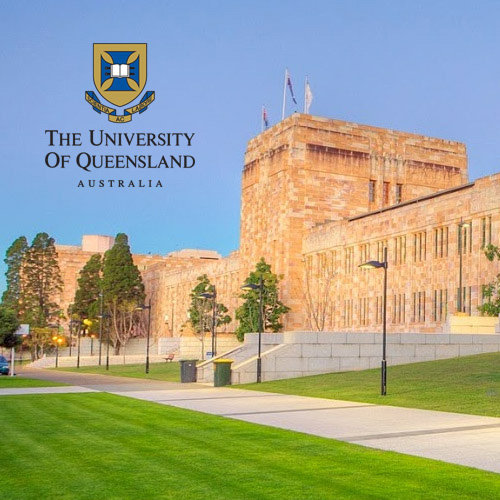Uq Location
Parking, road and building works, public transport, cycling, car sharing, campus buses. University of Queensland 5391 Warrego Highway Gatton QLD 4343. Office hours 8:30am - 4:30pm, Monday to Friday. General enquiries. Halls@uq.edu.au Phone: +61 7 5460. Planning events, alcohol on campus, venue and room bookings, UQ events calendar. Our campuses and other locations. Other locations.
LOCATION, LOCATION, LOCATION
International House is located within the University of Queensland (UQ) on-campus at St Lucia, Brisbane. UQ’s main campus is a vibrant mix of grand sandstone buildings and contemporary architecture, landscaped gardens and lakes, sporting ovals and tree-lined walking tracks beside the river.

UQ ranks in the world’s Top 50 universities (from a total of 10,000) and is ideally situated in one of Australia’s most popular tourism states. In 2018, over 18,000 students from 134 countries made up approximately one-third of students attending UQ.
Brisbane is affectionately known as the River City with a spectacular River Fire Festival with fireworks and jet flyovers celebrated each September. The Brisbane River gently wraps around the University of Queensland, which is only 7 km or 12 minutes from Brisbane’s CBD by road and a similar distance/time on the city’s River Cat ferry system. In October each year, the river banks are a ribbon of lilac as jacaranda trees burst into bloom, signalling the time when university students knuckle down for their final exams.
Near Brisbane, some of the best beaches in Australia – and the world – are right on your doorstep. Students can jump on a bus or train and within an hour be swimming at the famous Gold Coast (south) or Sunshine Coast (north). Spectacular Moreton and Stradbroke Islands are less than 1 hour away by ferry. Plus, there is Fraser Island, the largest sand island in the world.
Just over 4 hours north is the lower Great Barrier Reef and Lady Elliot Island, the best part of the reef to see the rich variety of corals and sea life, and the turtles coming ashore at Mon Repos in Bundaberg.
When it comes to animal encounters with Australia’s unique wildlife we have the best right here. The Lone Pine Koala Sanctuary is an experience not to be missed and just 15 minutes from IH. Australia Zoo, home of the legendary crocodile eco-warrior, Steve Irwin, is less than one hour away via public transport. In the opposite direction are the world-famous theme parks of the Gold Coast: Warner Bros. Movie World,Dreamworld,Sea World and the Australian Outback Spectacular.
More reasons to choose Brisbane and stay at International House?
Our city, at approximately 2 million, is less crowded
Dedicated Busways and train lines make getting around easy
Close to other Universities
- QUT (Gardens Point campus) in the City
- Griffith University South Bank in the City or Mount Gravatt
- ACU – Australian Catholic University
A bike-friendly city with dedicated bike lanes, making it easy to get around in a fun way
Come to Brisbane and live at International House. We offer tremendous value.
Take a Tour
Enjoy thisvideo tourof our student accommodation and facilities. Book in for an actual tour.
Apply Now
Secure a room in our student accommodation for 2021. You don’t need a University offer to apply.
Fees
Compare our fees with other student accommodation options and see the value for money of on-campus living.
- Land
- People
- Economy
- Government and society
- History


Our editors will review what you’ve submitted and determine whether to revise the article.
Join Britannica's Publishing Partner ProgramUq Printer Locations
and our community of experts to gain a global audience for your work! Richard Harold GreenwoodSee All Contributors
Richard Harold GreenwoodSee All ContributorsQueensland, state of northeastern Australia, occupying the wettest and most tropical part of the continent. It is bounded to the north and east by the Coral Sea (an embayment of the southwestern Pacific Ocean), to the south by New South Wales, to the southwest by South Australia, and to the west by the Northern Territory. The capital is Brisbane, on the state’s southeastern coast.
Queensland, the second largest of Australia’s states, occupies nearly one-fourth of the continent. The state is more than twice the size of the U.S. state of Texas and seven times larger than the United Kingdom. In terms of land occupancy, however, Queensland is indeed Australia’s largest state, with an occupied area greater than that of the whole of Western Australia. It also is the most decentralized mainland state, with most of its people scattered along the eastern coastline over a distance of 1,400 miles (2,250 km). The rest of the population is dispersed thinly over almost all of the vast interior, posing severe access and communication challenges. With its large area and small population, Queensland’s economy is essentially resource-based, its exports predominantly pastoral, agricultural, and mineral products.
More than half of Queensland lies north of the Tropic of Capricorn, and the early Europeans there, unfamiliar with life in the tropics, experienced much adversity in their initial attempts to colonize the region. However, the climate, formerly a handicap, eventually became an advantage. In contemporary times Queensland—under the self-proclaimed title of the “Sunshine State”—has reaped the benefits of rapid growth in tourism, some attractions being sandy surfing beaches, verdant estuaries, picturesque islands, and the Great Barrier Reef, extending for 1,250 miles (2,000 km) off Queensland’s Coral Sea coastline. The state also experienced rapid population growth through “sunbelt” migration to the more attractive coastal regions, although the population in the already sparsely populated interior continued to decline. Area 668,207 square miles (1,730,648 square km). Population (2016) 4,703,193.
Land
Relief and drainage
Queensland lies astride two major Australian landform zones: the Eastern Uplands and the Central Sedimentary Lowlands.
The eastern third of the state is a complex zone of old, eroded highlands, with extensive exposures of granite and mineralized metamorphic rocks, occasionally capped by younger basalt flows, and with broad basins of even more-recent sedimentary rocks. The boldest topography lies close to the seaboard, with summits from 2,000 to 5,000 feet (600 to 1,500 metres). The uplands attract high rainfall, supplying short, steep perennial streams, and are flanked by narrow coastal valleys. Elsewhere east of the mountains are vast sedimentary basins, forming lowlands drained by such major intermittent streams as the Burdekin, Fitzroy, Barron, and Burnett rivers. The coastline presents a variety of landscapes, including bold headlands, sandy beaches, lagoons, estuaries, wetlands, alluvial plains, occasional extensive vegetated dunelands, and a scattering of nearshore islands of great recreational value.
In contrast to the variety of the coastal area is the seeming monotony of the vast inland plains, broken occasionally by low tablelands and ranges and drained by unreliable streams that are prone to extensive flooding. Gentle gradients contribute to wide, braided stream channels, most fully developed in the Channel Country of the far southwest. These plains are underlain by the recent, deep sediments of the Great Artesian Basin, which constitutes a reliable source of water for livestock. To the northwest of the basin are the stumps of ancient mineralized uplands, forming the Mount Isa block.
Soils
Most soils are old and infertile, deficient in phosphorus and nitrogen. A lack of organic matter, particularly in arid and semiarid areas, accentuates the problem, and many soils have low capacity to absorb and retain moisture. In coastal areas the most fertile soils are of relatively recent alluvial or volcanic origin, while the gray-brown and black cracking clays of the central inland lowlands support extensive grasslands.
Climate

Lying between the low latitudes of 10° and 29° S, Queensland experiences tropical and subtropical climatic conditions. Summer temperatures are high, with average January maxima from 82 °F (28 °C) on the coast to 99 °F (37 °C) in the interior. Winters are mild and sunny, with July maxima from 68 °F (20 °C) in the south to 79 °F (26 °C) in the north. The interior experiences the most prolonged summer heat, while the southern interior and highlands have cooler winters, with a frost period of up to 100 days.
Precipitation and humidity show a persistent decline from the coast to the interior. A narrow coastal zone receives 30 to 60 inches (750 to 1,525 mm) annually, declining to only 5 to 6 inches (125 to 150 mm) in the southwest. Particularly in the northern tropics, the rainfall is concentrated in a wet season extending through summer and early autumn. Southern Queensland receives sufficient winter rain to support winter cropping of wheat. A limited coastal zone in northern Queensland receives copious year-round rainfall from the prevailing southeast winds, with annual totals of up to 180 inches (4,575 mm). Rainfall is highly variable, with extremes of drought and flood and a high risk of damage from tropical cyclones on the more northerly coasts. In late 2010 and early 2011, unusually heavy rains caused several of the state’s major river systems to overrun their banks. The record flooding inundated cities including Rockhampton, Bundaberg, and Emerald, and crops across large areas of Queensland were destroyed.
- Capital
- Brisbane
- Population
- (2016) 4,703,193
- Total area1 (sq mi)
- 668,207
- Total area1 (sq km)
- 1,730,648
- Premier
- Annastacia Palaszczuk (Australian Labor Party)
- Date of admission
- 1901
- State animal
- koala
- State flower
- Cooktown orchid
- Seats in federal House of Representatives
- 30 (of 150)
- Time zone
- Australian Eastern Standard Time (GMT + 10)
Uq St Lucia Address
- 1Mainland and island areas only; excludes coastal water.
